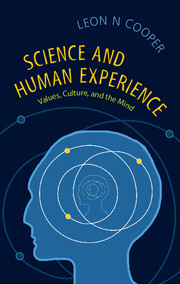Book contents
- Frontmatter
- Dedication
- Contents
- Preface
- Acknowledgement
- Part One Science and Society
- Part Two Thought and Consciousness
- 13 Source and Limits of Human Intellect
- 14 Neural Networks
- 15 Thought and Mental Experience: The Turing Test
- 16 Mind as Machine: Will We Rubbish Human Experience?
- 17 Memories and Memory: A Physicist's Approach to the Brain
- 18 On the Problem of Consciousness
- Part Three On the Nature and Limits of Science
- References
18 - On the Problem of Consciousness
from Part Two - Thought and Consciousness
Published online by Cambridge University Press: 05 November 2014
- Frontmatter
- Dedication
- Contents
- Preface
- Acknowledgement
- Part One Science and Society
- Part Two Thought and Consciousness
- 13 Source and Limits of Human Intellect
- 14 Neural Networks
- 15 Thought and Mental Experience: The Turing Test
- 16 Mind as Machine: Will We Rubbish Human Experience?
- 17 Memories and Memory: A Physicist's Approach to the Brain
- 18 On the Problem of Consciousness
- Part Three On the Nature and Limits of Science
- References
Summary
Can we understand consciousness? Can consciousness be constructed from ordinary materials? The implications would be monumental if it could, but would be no less so if it could not.
This essay is based on an article originally published in Neural Networks, 20(9), in 2007.
Toward the end of his wonderfully productive life, Francis Crick engaged in a search for neural correlates of mental states. At least a glimmer of possible correlates is provided by techniques such as magnetic resonance imaging (MRI); these have been extraordinarily effective in determining regions of the brain involved in various mental activities. An additional glimmer is provided by the remarkable progress that has been made in elucidating the cellular and molecular basis for learning and memory storage. Although these are suggestive of the neural correlates for which Crick was searching and although many words have been expended on possible substrates for mental states, the origin and nature of consciousness, our awareness of ourselves, remains a complete mystery.
The mystery is sufficiently vexing to provoke occasional claims that the problem is not soluble using ordinary scientific methods. I have heard it argued, for example, that consciousness is an epiphenomenon (secondary phenomenon). (I'm not sure what is intended by this argument, except to suggest that consciousness is not really there and so doesn't have to be explained.)
- Type
- Chapter
- Information
- Science and Human ExperienceValues, Culture, and the Mind, pp. 148 - 152Publisher: Cambridge University PressPrint publication year: 2014



